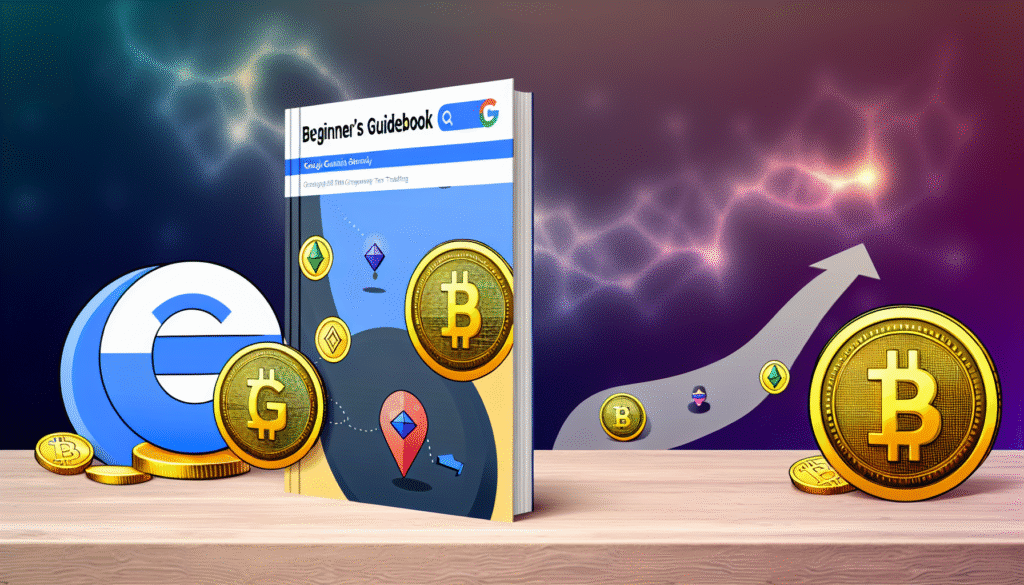
Key Takeaways
Gemini is a powerful platform for research and idea generation but should not be considered a source of trading signals or personalized advice.
It summarizes project fundamentals and compares assets effectively, but some responses, like those regarding Pi Coin’s delayed mainnet, expose the risks of outdated or incomplete data.
Reflecting on past trades using Gemini can help traders recognize better timing and assess risks, although market conditions change and human judgment is always crucial.
Given that Gemini Flash 2.5 does not have access to real-time data, it should be utilized in conjunction with current tools like TradingView, Nansen, and CoinGecko.
The cryptocurrency market is a constantly changing and often unpredictable environment, making informed decision-making essential for traders. The emergence of advanced AI models like Google Gemini provides a powerful new method for gaining a competitive edge, thereby transforming how individuals analyze market data, grasp sentiment, and formulate trading strategies.
It’s important to clarify right from the start: Google Gemini is not a “magic buy/sell button.” It functions as an intelligent agent, enhancing your research and analysis capabilities, alleviating the need for manual data sorting, and minimizing emotional biases that may affect human traders.
Here is how you can utilize Google Gemini for more informed crypto trading.
Keep in mind that all prompts and examples mentioned in this article were tested using Gemini Flash 2.5, which lacks access to real-time data and provides insights based on its training up to early 2024. Always verify with current market conditions and data sources before acting on any AI-generated outputs.
1. Pre-Trade Research and Due Diligence
Before making any trade, grasping what you’re investing in is crucial. Gemini can assist by summarizing intricate project details, comparing competitors, and evaluating regulatory risks in an easy-to-understand manner.
Understand Token Fundamentals
Rather than manually sifting through lengthy white papers, utilize Gemini to summarize the essential elements of a cryptocurrency, its purpose, supply dynamics, governance structure, and red flags.
Example prompt: “Summarize the white paper of Dogecoin (DOGE). Explain how its scarcity compares to Bitcoin (BTC).”
In response, Gemini outlines Dogecoin as a memecoin primarily used for payments, characterized by an uncapped supply with over 10,000 coins minted every minute. Unlike Bitcoin (BTC), which has a fixed supply of 21 million coins, Dogecoin lacks smart contract features, experiences energy and scalability challenges due to PoW, and is inflationary.
Compare Similar Projects
When deciding between two competing assets, Gemini can evaluate aspects like technological innovation, developer activity, and market positioning.
Example prompt: “Compare XRP (XRP) and Solana (SOL) regarding their technological strengths, adoption rates, developer activity (e.g., GitHub commits), and market capitalization.”
Gemini evaluates XRP and Solana across four dimensions: XRP is tailored for rapid, cost-effective payments and is primarily utilized by institutions, while Solana focuses on high-throughput performance for DeFi and NFTs. Developer activity is more robust on Solana, while XRP continues to develop its smart contract capabilities. However, the market cap data cited by Gemini appears outdated and warrants independent verification.
Did you know? Google Gemini operates on a unified multimodal architecture, making it capable of processing text, code, images, audio, and video from its inception, unlike models like ChatGPT that added these capabilities later.
2. Entry and Exit Timing Using Sentiment Assessment
In addition to fundamentals, market psychology is vital in short-term price movements. Gemini can evaluate sentiment from social media, simulate potential news effects, and contextualize popular indicators.
Gauge Community Sentiment
Crypto communities often react swiftly to upcoming events. Gemini assists in determining whether sentiment is bullish, bearish, or mixed.
Example prompt: “Analyze social media sentiment surrounding Pi Coin. Is the community generally optimistic or cautious?”
Gemini’s response about Pi Coin’s social media sentiment is partially inaccurate. While it correctly notes a blend of optimism and caution, it incorrectly states that Pi Coin’s mainnet launch has been delayed.
In actuality, the mainnet was officially launched in February 2025. This outdated reference indicates that the Gemini 2.5 Flash model may have generated its answer from static or pre-mainnet data. Additionally, the response misses key post-launch issues currently causing caution, such as token withdrawal limitations, absence from major exchanges, KYC delays, and confusion about token migration.
While the overall sentiment tone—hopeful yet skeptical—is valid, the explanation lacks current context. This underscores the necessity of cross-verifying AI-generated insights with ongoing developments when evaluating evolving crypto projects like Pi Coin.
3. Strategy Development: Testing Ideas with Context
Whether you’re formulating new strategies or adjusting existing ones, Gemini can support conceptual analysis, pattern explanations, and market correlation identification.
Explore Market Correlations
Grasping how Bitcoin interacts with traditional markets can refine timing and asset selection. Gemini assists in identifying leading indicators and trailing trends.
Example prompt: “Is there a historical correlation between the S&P 500 and Bitcoin? What indicators suggest one leads the other?”
Gemini’s response regarding the historical correlation between Bitcoin and the S&P 500 is broadly accurate but lacks current specificity. It correctly notes that the correlation was low or even negative before 2020 and has become more positive in the years since, particularly during periods of market stress. This reflects the overarching trend of Bitcoin behaving more like a risk asset as institutional adoption increased.
According to a CME Group analysis, since 2020, Bitcoin and major stock indices have been influenced by similar macroeconomic factors, such as interest rate policies, inflation expectations, and overall risk sentiment.
Recent data further confirms this trend.
In early 2025, the 30-day correlation between Bitcoin and the S&P 500 rebounded sharply, reaching 0.87 during times of heightened market stress, as reported by Reuters.
Historically, this correlation has oscillated in the 0.3–0.5 range but can spike above 0.7 during significant market sell-offs. A live chart from NewHedge.io visually supports these patterns, illustrating periods of strong positive correlation in recent quarters.
While Gemini accurately captures the general behavior change and acknowledges that neither asset consistently leads the other, it does not reflect the current correlation strength or real-time macro context. For instance, during the Q1 2025 downturn, both Bitcoin and US equities responded simultaneously to Fed policy concerns and geopolitical tensions.
Although Gemini offers relevant insights grounded in prevailing market signals and your trading history, conditions can change rapidly. Traders should not rely solely on historical analogs or AI-generated signals and must consistently evaluate risk, confirm entries, and maintain disciplined position management.
Did you know? Gemini Flash (like 2.5) is a lightweight, faster variant optimized for responsiveness, while Gemini Pro and Ultra are designed for more complex tasks. It competes with OpenAI’s ChatGPT-4 Turbo in reasoning, speed, and tool integration.
What Google Gemini Can’t Do in Crypto Trading
While Gemini is a powerful AI tool, it’s essential to comprehend its limitations to avoid misplaced trust or over-reliance.
It doesn’t:
Predict Prices: Gemini can analyze past trends and simulate scenarios but does not “know” the future. Any speculation about potential price movements should not be seen as a forecast.
Access Real-Time On-Chain Data: Currently, Gemini does not connect directly to blockchains or APIs for live data. For up-to-date prices, wallet flows, gas fees, or protocol activity, you still need tools like CoinGecko, DefiLlama, or Nansen.
Replace Technical Tools: While it can conceptually explain technical indicators or patterns, it does not offer live charting, auto-draw support/resistance lines, or generate buy/sell signals. Use it in tandem with trading platforms like TradingView or CoinMarketCap.
Understand Your Portfolio: Gemini won’t know your current holdings, risk tolerance, or position sizing unless you provide that information. While it can aid in thinking through decisions, it isn’t personalized unless you make it so.
When to Use AI and When to Be Skeptical
Recognizing AI’s strengths and blind spots is vital for safe and effective usage, reinforcing the notion that shared macro triggers often propel both markets in tandem.
Thus, while Gemini’s explanations may be directionally accurate, they might lack the latest data points necessary for time-sensitive analysis and should be supplemented with live market tracking tools and updated research.
Learn Technical Patterns
Gemini can describe how common patterns like head-and-shoulders or double tops behave in the context of crypto’s high-volatility environment.
Example prompt: “Describe two common technical analysis patterns and explain their typical implications in volatile crypto markets.”
Gemini explains that head-and-shoulders patterns signal trend reversals, whether bearish or bullish depending on the formation. Double top/bottom patterns also indicate potential reversals, with prices failing to breach resistance or support, common in volatile crypto markets.
Did you know? Versus Elon Musk’s Grok (developed by xAI), Gemini is closely integrated with Google Search, Docs, and other Google services, offering deep contextual integration for productivity, while Grok prioritizes real-time X data.
4. Risk Management: Building a Resilient Portfolio
Risk management goes beyond just setting stop-losses. Gemini can assist in smarter diversification and planning for extreme market scenarios.
Find Low-Correlation Assets
Mitigating portfolio risk means not putting all your eggs in the Bitcoin basket. Gemini can help pinpoint altcoins with low historical correlation.
Example prompt: “Suggest one crypto asset that historically has a low correlation with Bitcoin, for diversification purposes.”
In response, Gemini does not directly answer the question, which seeks one crypto asset with historically low correlation to Bitcoin. Instead, it elaborates on why such assets are scarce, noting that most altcoins tend to move alongside Bitcoin, especially during market-wide events. While this information is useful, it fails to provide a specific asset as requested.
5. Trade Reflections: Learning from the Past
The best traders review their winning and losing trades. Gemini can analyze the market conditions surrounding your past trades and explain unusual price movements.
Analyze Past Trades
Gain insights regarding the market conditions during a trade. Gemini can highlight news, sentiment, or technical signals you may have overlooked.
Sample Past Trade
Asset: Ether (ETH)
Trade: Bought at $1,500 on March 10, 2021
Sold at: $1,800 on March 20, 2021
Outcome: Profit of $300
Context: You sold after a rally but missed a subsequent larger run.
Suppose you’re contemplating buying ETH again, and the setup seems similar.
Let Gemini compare past market conditions with today’s spot patterns, helping you critically evaluate timing, risk, and entry signals.
Example prompt: “I’m planning to enter a new ETH position this week. Based on my past ETH trade from March 2021, are there similar market signals now regarding momentum, sentiment, or macro news? What lessons from that trade could improve my timing this time?”
Gemini’s response successfully compares the March 2021 ETH trade with the July 2025 market landscape. It identifies analogous bullish drivers such as strong momentum (+50% surge), ETF inflows ($3.2 billion in July), institutional demand, and macro stability, reflecting the backdrop from 2021.
The analysis suggests that the trader’s previous early exit likely resulted in missing a larger run and recommends a more nuanced approach this time: Monitor sustained demand, consider partial profit-taking instead of a complete exit, and watch for signs of momentum exhaustion or macro downturn.
When something seems off, delve deeper. AI can reflect biases in training data or fail to capture recent shifts in market dynamics. Always remember that no AI model truly “understands” financial markets. It doesn’t trade, manage capital, or feel the consequences of a poor decision—you do.
To maximize your advantage, combine Gemini with tools like:
Market Data and Charting: TradingView, CoinMarketCap, CoinGecko
On-Chain Analytics: Nansen, Glassnode, Dune Analytics
Portfolio Trackers: Zapper, DeBank, Zerion
News and Alerts: Token Terminal, CryptoPanic, Messari
Social and Sentiment: LunarCrush, Santiment, X, Reddit
Leverage Gemini to interpret, synthesize, or simulate insights derived from what these tools provide.
Remember that in crypto, curiosity and caution should always go hand in hand.
This article does not constitute investment advice or recommendations. Every investment and trading move carries risk, and readers should conduct their own research before making a decision.

